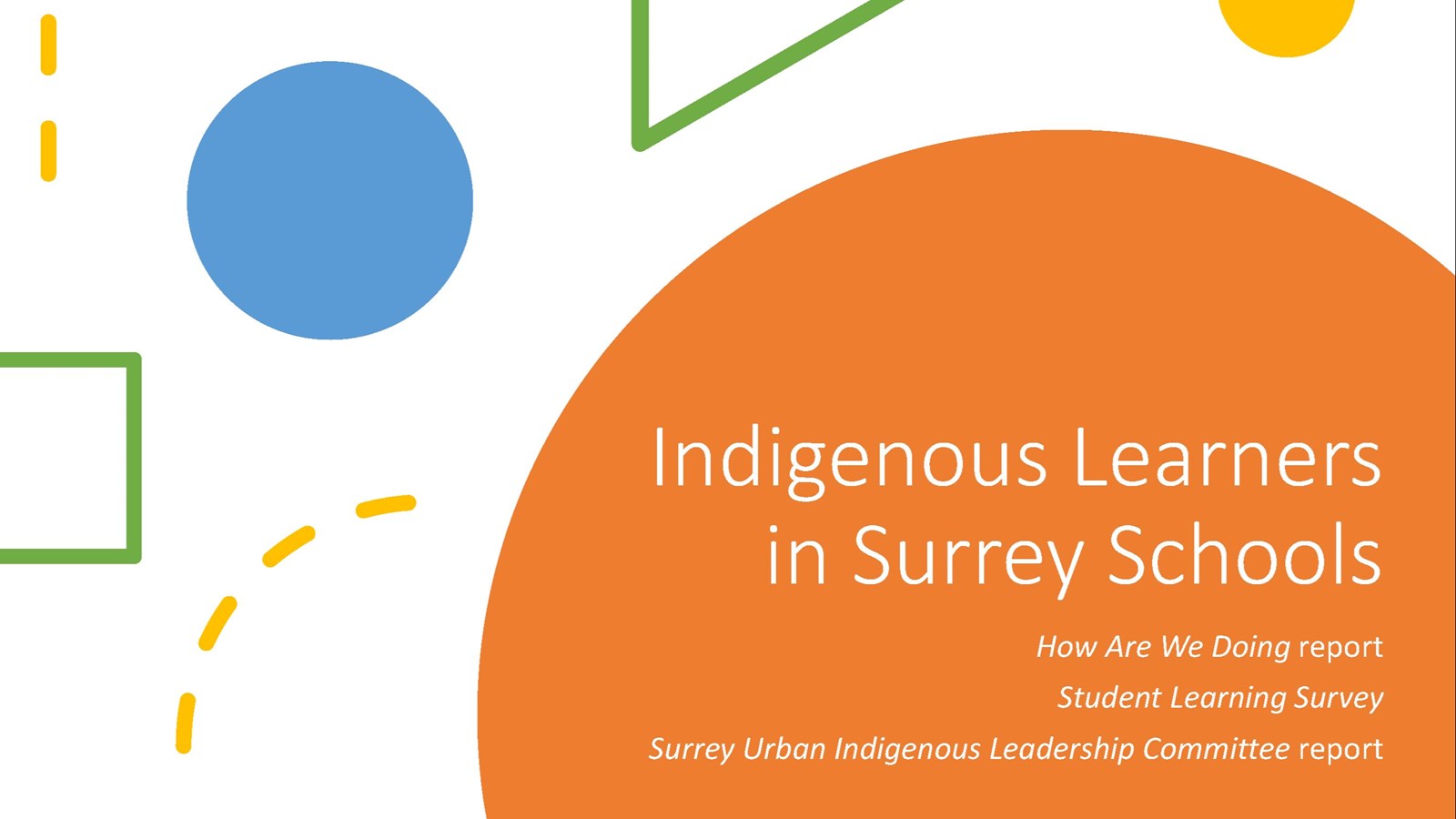Surrey Schools remains committed to improving Indigenous graduation rates by 2028
The district is identifying ways to increase the number of Indigenous graduates, foster a greater sense of belonging and create opportunities for Indigenous students to see themselves reflected in the curriculum, following a presentation of the latest graduation rates at the Surrey Board of Education’s public January meeting.
The board heard that the 2022-23 graduation rate for Indigenous students had dropped from 57% to 50%, according to the most recent How Are We Doing report, an annual document that has tracked student learning since the late 1990s. In keeping with the board’s commitment to improve Indigenous graduation rates by 15 to 20% between 2023 and 2028, staff are working to increase both existing and new supports for Indigenous students to ensure their success in schools across the district.
“Our board is fully committed to increasing Indigenous graduation rates in our school district,” said Gary Tymoschuk, Vice-Chair of the Surrey Board of Education. “This is not something that we are taking lightly and we recognize that it may take some time for current efforts and initiatives to be reflected in the data.
“When we set out on this journey a year ago, we knew it was a big goal that would require substantial change and ongoing dialogue, grounded in the principles of equity, cultural sensitivity and community engagement. Together with our school-based staff, our district staff and community, we will forge a path forward that honors Indigenous perspectives and fosters an environment where every student can thrive.”
“It’s quite a bold and aggressive goal by the board but it needs to happen,” said Deputy Supt. Andrew Holland. “We own this result, and the board wants it to change and we’re working with staff, families and students to ensure success.
“The education system needs to work for each and every child to reach their full potential, to develop and grow socially, emotionally and intellectually. The fact that 50% of our Indigenous students are not graduating is unacceptable, and we need to do everything possible to change that narrative.”
Lyn Daniels, Director of Instruction with Indigenous Learning, said there is a lot working against Indigenous communities: Students face a number of racial barriers in society and systemic challenges compared to their non-Indigenous peers, including higher rates of single parent households, lower rates of home ownership, generational trauma with residential schools and a history of exclusion that has informed a distrust in public education. Additionally, a significant number of Indigenous students have learning, behavioural or mental health designations, and almost one in five Indigenous students are in care.
While the Indigenous graduation rate has improved from 37% in 2002, both the board and staff have expressed determination to raise rates well above the five-year average of 53% by instilling enhanced emotional and academic support for Indigenous students through a student-by-student approach.
The district currently supports Indigenous students with graduation advocates, child and youth workers, educational assistants, cultural facilitators, First Peoples in Residence, helping teachers and transition teams, as well as through ongoing equity scans and student leadership forums.
“We have Indigenous student support teams at each secondary school to make sure no students fall through the cracks and to support kids academically, as well as create a sense of belonging,” said Holland. “It’s also to help set up career paths or post-secondary options for careers and a motivation to stay in school.”
“We’ve had a real focus on the secondary schools with our Indigenous student success initiative, and it’s a key priority in every school,” added Daniels. “Since last year, we’ve had five opportunities to gather secondary principals together to have a dialogue about what it’s like to be an Indigenous student in secondary school spaces in our district.
“We had some really great conversations, and we were so encouraged by what students were saying and how articulate they are in sharing their experiences.”
Decisions related to Indigenous learning are guided by Indigenous community leaders from the Semiahmoo First Nation, Katzie First Nation, Métis Nation BC and FRAFCA, and the district has a number of partnerships with community organizations focused on students.
Looking ahead to 2028, both Holland and Daniels said there’s a sense of optimism about everything the district has to offer Indigenous students to help them succeed in school and beyond.
“The board has publicly made the statement to focus on this goal,” said Daniels. “That’s really important because sometimes people like to sweep things under the rug and pretend things are okay, or they blame the students.”
“The system has to change, not the kids,” said Holland. “This is a very high priority in the district.”


